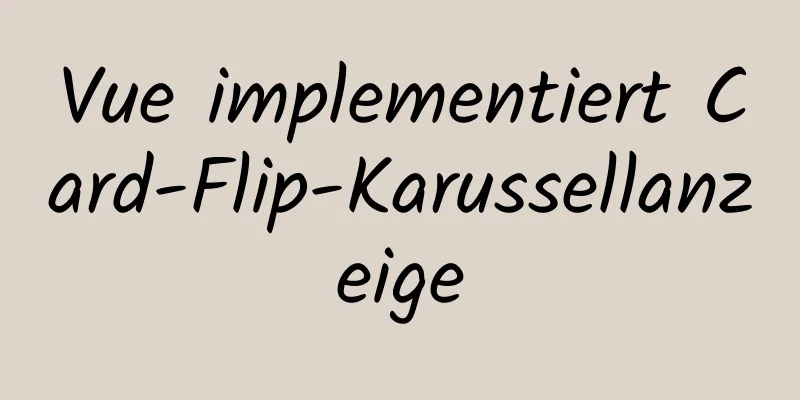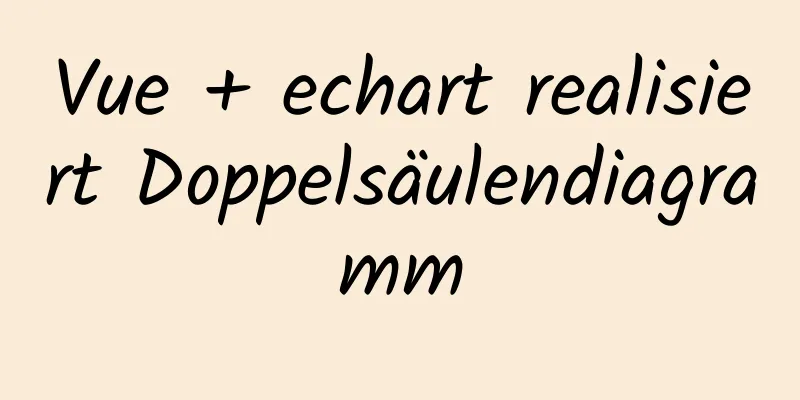Vue implementiert Card-Flip-Karussellanzeige

|
Karussellanzeige der Vue-Karte beim Umschalten der Daten beim Umschalten. Zu Ihrer Information: Der spezifische Inhalt ist wie folgt Effekte und Codes
Code:
<Vorlage>
<div Klasse="Listencontainer">
<div Klasse="Grund" v-if="Liste1.Länge > 0 || Liste2.Länge > 0">
<div Klasse="Logo">
<svg-icon Klasse="center-svg" Symbol-Klasse="centerLogo"></svg-icon>
<div Klasse="echart">
<echart :option="option" echartId="roadP" />
</div>
</div>
<Straßenkomponente :list="list1[0]" :style="{ display: show1 }"></Straßenkomponente>
<Straßenkomponente :list="list2[0]" :style="{ display: show2 }"></Straßenkomponente>
<Straßenkomponente :list="list1[1]" :style="{ display: show3 }"></Straßenkomponente>
<Straßenkomponente :list="list2[1]" :style="{ display: show4 }"></Straßenkomponente>
<Straßenkomponente :list="list1[2]" :style="{ display: show5 }"></Straßenkomponente>
<Straßenkomponente :list="list2[2]" :style="{ display: show6 }"></Straßenkomponente>
</div>
</div>
</Vorlage>
<Skript>
importiere { defineComponent, inject, onMounted, reaktiv, onUnmounted, toRefs } von „vue“;
importiere { congestionPredict } von '@/apis/fullView';
Echart aus „@/components/common/echart“ importieren;
importiere '@/assets/icons/fullView/westToEast.svg';
importiere '@/assets/icons/fullView/eastToWest.svg';
importiere '@/assets/icons/fullView/northToSouth.svg';
importiere '@/assets/icons/fullView/southToNorth.svg';
importiere '@/assets/icons/fullView/centerLogo.svg';
importiere RoadComponent aus „@/views/fullView/left/RoadComponent“;
exportiere StandarddefiniereKomponente({
Name: 'RoadP',
Komponenten: { echart, RoadComponent },
aufstellen() {
Lassen Sie echarts = inject('ec');
const dataMap = reaktiv({
Intervall: null,
Intervall1: null,
Liste1: [],
Liste2: [],
Liste: [],
Option: {},
Zeitüberschreitung: 10,
show1: 'Block',
show2: "keine",
show3: 'blockieren',
show4: "keine",
show5: 'blockieren',
show6: "keine",
});
beimMounted(() => {
getData();
dataMap.interval = setInterval(() => {
getData();
}, 60 * 1000);
dataMap.interval1 = setInterval(() => {
wenn (dataMap.timeout > 8 und dataMap.timeout < 11) {
dataMap.timeout = dataMap.timeout - 1;
dataMap.show1 = "Block";
dataMap.show3 = "Block";
dataMap.show5 = "Block";
dataMap.show2 = "keine";
dataMap.show4 = "keine";
dataMap.show6 = "keine";
} sonst wenn (dataMap.timeout === 8) {
dataMap.timeout = dataMap.timeout - 1;
dataMap.show1 = "keine";
dataMap.show3 = "Block";
dataMap.show5 = "Block";
dataMap.show2 = "Block";
dataMap.show4 = "keine";
dataMap.show6 = "keine";
} sonst wenn (dataMap.timeout === 7) {
dataMap.timeout = dataMap.timeout - 1;
dataMap.show1 = "keine";
dataMap.show3 = "keine";
dataMap.show5 = "Block";
dataMap.show2 = "Block";
dataMap.show4 = "Block";
dataMap.show6 = "keine";
} sonst wenn (dataMap.timeout < 7 && dataMap.timeout > 3) {
dataMap.timeout = dataMap.timeout - 1;
dataMap.show1 = "keine";
dataMap.show3 = "keine";
dataMap.show5 = "keine";
dataMap.show2 = "Block";
dataMap.show4 = "Block";
dataMap.show6 = "Block";
} sonst wenn (dataMap.timeout === 3) {
dataMap.timeout = dataMap.timeout - 1;
dataMap.show1 = "Block";
dataMap.show3 = "keine";
dataMap.show5 = "keine";
dataMap.show2 = "keine";
dataMap.show4 = "Block";
dataMap.show6 = "Block";
} sonst wenn (dataMap.timeout === 2) {
dataMap.timeout = dataMap.timeout - 1;
dataMap.show1 = "Block";
dataMap.show3 = "Block";
dataMap.show5 = "keine";
dataMap.show2 = "keine";
dataMap.show4 = "keine";
dataMap.show6 = "Block";
} sonst wenn (dataMap.timeout === 1) {
dataMap.timeout = dataMap.timeout - 1;
dataMap.show1 = "Block";
dataMap.show3 = "Block";
dataMap.show5 = "Block";
dataMap.show2 = "keine";
dataMap.show4 = "keine";
dataMap.show6 = "keine";
} anders {
dataMap.timeout = 10;
}
}, 1000);
});
beiUnmountet(() => {
Intervall löschen(dataMap.interval);
Intervall löschen(dataMap.interval1);
});
const getData = () => {
congestionPredict()
.then((res) => {
wenn (res && res.code === 0 && res.data) {
dataMap.list1 = [];
dataMap.list2 = [];
für (sei i = 0; i < 6; i = i + 2) {
dataMap.list1.push([
{
Name: res.data[i].name,
Richtung: res.data[i].direction,
Wert: res.data[i].index.toFixed(1),
Symbol: res.data[i].englishDirection,
},
{
Name: res.data[i + 1].name,
Richtung: res.data[i + 1].direction,
Wert: res.data[i + 1].index.toFixed(1),
Symbol: res.data[i + 1].englishDirection,
},
]);
}
für (sei j = res.data.length - 1; j > res.data.length - 6; j = j - 2) {
dataMap.list2.push([
{
Name: res.data[j].name,
Richtung: res.data[j].direction,
Wert: res.data[j].index.toFixed(1),
Symbol: res.data[j].englishDirection,
},
{
Name: res.data[j - 1].name,
Richtung: res.data[j - 1].direction,
Wert: res.data[j - 1].index.toFixed(1),
Symbol: res.data[j - 1].englishDirection,
},
]);
}
}
})
.catch((err) => {
console.log(fehler);
})
.finally(() => {
dataMap.option = getOption();
});
};
const getOption = () => {
zurückkehren {
Serie: [
{
Typ: 'liquidFill',
Name: '',
Radius: '85%',
Mitte: ['50%', '45%'],
Daten: [0,55, 0,5, 0,5],
Farbe: ['rgba(0,118,255,0,5)', 'rgba(0,102,255,0,5)', 'rgba(0,185,255,0,6)'],
Gliederung: {
anzeigen: falsch,
},
Hintergrundstil: {
Farbe: 'transparent',
Rahmenfarbe: 'transparent',
Rahmenbreite: 1,
Schattenfarbe: 'transparent',
Schattenunschärfe: 0,
},
Etikett: {
anzeigen: falsch,
},
},
],
};
};
zurückkehren {
...toRefs(Datenkarte),
};
},
});
</Skript>
<style scoped lang="weniger">
.Listencontainer {
Breite: 100 %;
Höhe: 280px;
}
.Grund {
Breite: 696px;
Rand: 16px automatisch;
Höhe: 228px;
Position: relativ;
Listenstil: keiner;
.logo {
Breite: 150px;
Höhe: 150px;
Position: absolut;
links: 0;
rechts: 0;
oben: 0;
unten: 0;
Rand: automatisch;
Hintergrund: URL ('~@/assets/img/fullView/centerGround.dynamic.png');
Hintergrundgröße: 100 % 100 %;
}
.echart {
Breite: 158px;
Höhe: 158px;
Position: absolut;
links: -4px;
oben: 4px;
}
}
.center-svg {
Breite: 90px;
Höhe: 100px;
Position: absolut;
links: 30px;
oben: 25px;
Z-Index: 15;
}
</Stil>Kartenkomponenten
<Vorlage>
<div Klasse="Zurück" v-if="list.length > 0">
<div Klasse="oben">
<svg-icon class="svg" :icon-class="Liste[0].icon"></svg-icon>
<div>
<div>
<p class="span-container text-overflow">{{ Liste[0].name }}</p>
<p Klasse="index" :style="{ Farbe: switchColor(Liste[0].Wert) }">{{ Liste[0].Wert }}</p>
</div>
<div>
<p class="span-container text-overflow">{{ Liste[1].name }}</p>
<p Klasse="index" :style="{ Farbe: switchColor(Liste[1].Wert) }">{{ Liste[1].Wert }}</p>
</div>
</div>
<svg-icon class="svg" :icon-class="Liste[1].icon"></svg-icon>
</div>
</div>
</Vorlage>
<Skript>
importiere { defineComponent } von „vue“;
exportiere StandarddefiniereKomponente({
Name: 'Straßenkomponente',
Requisiten: {
Liste: {},
},
aufstellen() {
const switchColor = (Wert) => {
wenn (Wert > 0 und Wert <= 2) {
gib '#00DBEB' zurück;
} sonst wenn (Wert > 2 und Wert <= 3) {
gib '#FFD200' zurück;
} sonst wenn (Wert > 3 und Wert <= 4) {
gib '#FF7309' zurück;
} sonst wenn (Wert > 4 und Wert <= 5) {
gib '#FF0000' zurück;
}
};
zurückkehren {
SchalterFarbe,
};
},
});
</Skript>
<style lang="less" scoped>
.geh zurück {
Transformationsstil: 3D bewahren;
Animation: zurück 0,5 s linear 1;
}
.zurück:hover {
Animations-Wiedergabestatus: angehalten;
}
@keyframes zurück {
0% {
transformieren: Z-Drehung (0 Grad) Y-Drehung (0 Grad) X-Drehung (-90 Grad);
}
100 % {
transformieren: Z drehen (0 Grad) Y drehen (0 Grad) X drehen (0 Grad);
}
}
.span-container {
Breite: 150px;
Rand: 0 0 5px 5px;
Farbe: var(--text-blue);
Schriftgröße: var(--font-traffic-size);
}
.svg {
Breite: 41px;
Höhe: 41px;
}
.Spitze {
Anzeige: Flex;
Flex-Wrap: Nowrap;
Polsterung: 0 20px;
Rand: 0 0 14px 0;
Inhalt ausrichten: Abstand dazwischen;
Elemente ausrichten: zentrieren;
Höhe: 68px;
Rahmenradius: 10px;
Deckkraft: 0,9;
Hintergrund: linearer Farbverlauf(
89 Grad,
rgba(0, 76, 169, 0,5) 0%,
rgba(0, 76, 169, 0) 46%,
rgba(0, 76, 169, 0) 49%,
rgba(0, 76, 169, 0) 52%,
rgba(0, 76, 169, 0,5) 100 %
);
}
.oben > div {
Breite: 640px;
Anzeige: Flex;
Textausrichtung: zentriert;
Elemente ausrichten: zentrieren;
Flex-Wrap: Nowrap;
Inhalt ausrichten: Abstand dazwischen;
& > div {
Breite: 160px;
Spanne {
Rand links: 15px;
}
}
.index {
Breite: 155px;
Höhe: 28px;
Schriftgröße: var(--font-size-chart-title);
Textausrichtung: zentriert;
Rand: 0;
Zeilenhöhe: 28px;
}
}
</Stil>Um Tutorials zu Vue.js-Komponenten zu erhalten, klicken Sie bitte auf das spezielle Lern-Tutorial zu Vue.js-Komponenten. Wunderbares Thema teilen: jQuery-Bildkarussell JavaScript-Bildkarussell Bootstrap-Bildkarussell Das Obige ist der vollständige Inhalt dieses Artikels. Ich hoffe, er wird für jedermanns Studium hilfreich sein. Ich hoffe auch, dass jeder 123WORDPRESS.COM unterstützen wird. Das könnte Sie auch interessieren:
|
<<: Grafisches Tutorial zur Installation und Konfiguration von mysql 5.7.17 winx64.zip
>>: So steuern Sie die Startreihenfolge von Docker Compose-Diensten
Artikel empfehlen
Analyse und Lösung des a.getAttribute(href,2)-Problems in IE6/7
Kurzbeschreibung <br />In IE6 und 7 wird in...
Natives js zum Erzielen eines Akkordeoneffekts
Auch bei der tatsächlichen Entwicklung von Websei...
Detaillierte Erläuterung der Verarbeitung der drei Docker Nginx-Protokolle
Da die Kollegen im Unternehmen die Standardausgab...
Interpretation von syslogd- und syslog.conf-Dateien unter Linux
1: Einführung in syslog.conf Für verschiedene Uni...
Vue3.0 implementiert die Kapselung von Kontrollkästchenkomponenten
In diesem Artikelbeispiel wird der spezifische Co...
Installieren und verwenden Sie Git und GitHub unter Ubuntu Linux
Einführung in Git Git ist eine Open-Source-Versio...
9 superpraktische CSS-Tipps, die Designern und Entwicklern helfen
Im Kopf eines Webdesigners muss viel Wissen im Zus...
Lassen Sie uns ausführlich über die gemeinsame MySQL-Abfrage sprechen
Inhaltsverzeichnis Union-Abfrage 1. Fragen Sie di...
Zusammenfassung der Änderungen bei der Verwendung von Axios in den Studiennotizen zu Vue3
Inhaltsverzeichnis 1. Grundlegende Verwendung von...
Detailliertes Tutorial zur Konfigurationsmethode der kostenlosen Installationsversion von Mysql 5.7.19 (64-Bit)
Laden Sie mysql-5.7.19-winx64 von der offiziellen...
CSS3 realisiert den grafischen Fallanimationseffekt
Sehen Sie zuerst den Effekt Implementierungscode ...
Lösen Sie das Problem, dass ifconfig im Docker nicht verfügbar ist
Als ich kürzlich Docker lernte, stellte ich fest,...
Implementierungscode für die teilweise Aktualisierung einer HTML-Seite
Aktualisierung der Ereignisantwort: Aktualisierun...
Implementierung eines einfachen Chatroom-Dialogs basierend auf WebSocket
In diesem Artikel finden Sie den spezifischen Cod...
So verwenden Sie das Datums-Plugin vue-bootstrap-datetimepicker in vue-cli 3
Nachfragehintergrund In letzter Zeit plane ich, V...










